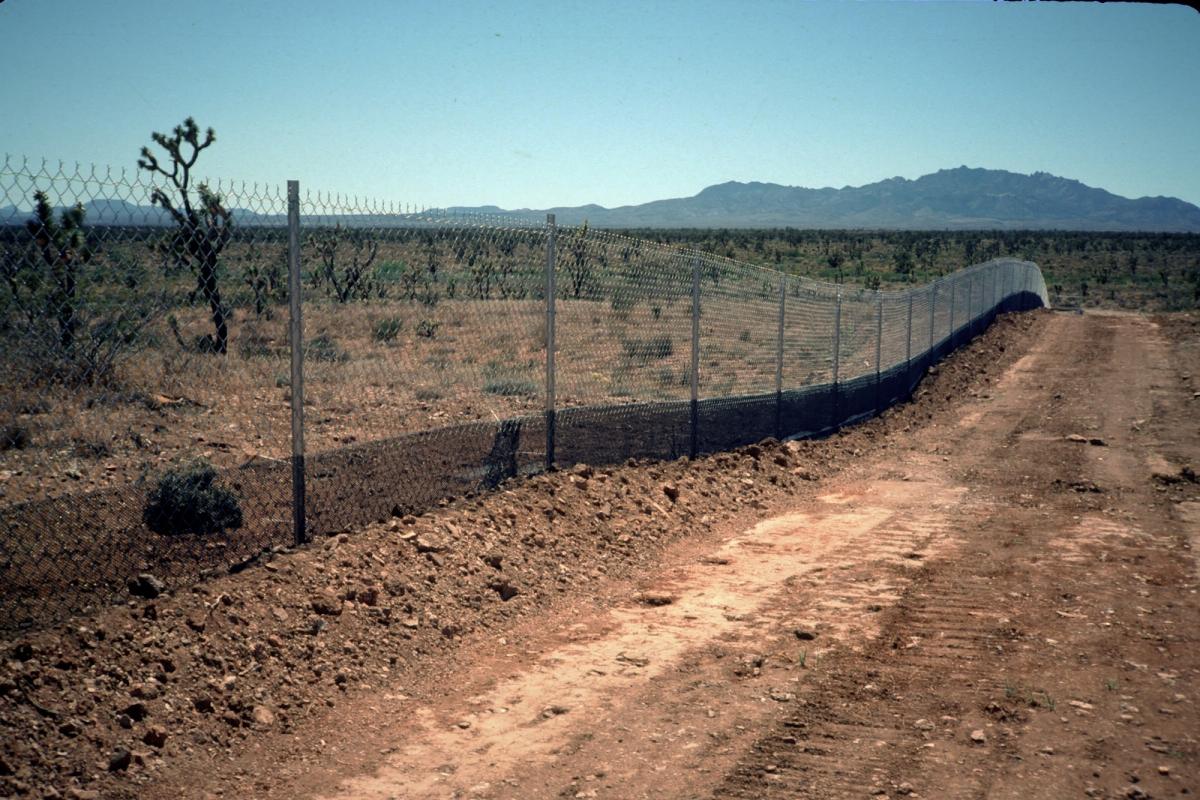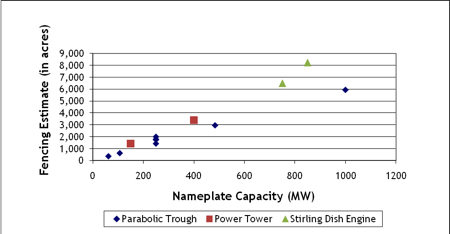Perimeter Fencing

Most utility-scale solar facilities will require the placement of perimeter fencing. The fencing will serve two primary functions: security, and as an environmental barrier to keep wildlife out of the project site (Figure 1). Table 1 provides the fencing estimates that were supplied by the project developers in each of their project applications.
| Proposal Name | Nameplate Capacity (MW) | Fencing Estimate (in acres) |
|---|---|---|
| City of Palmdale - Hybrid Gas-Solar | 62 | 377.0 |
| San Joaquin Solar 1 & 2 | 106.8 | 640.0 |
| Rice Solar Energy Project | 150 | 1410.0 |
| Solar Millennium - Ridgecrest | 250 | 1440.0 |
| Beacon Solar Energy Project | 250 | 2012.0 |
| Abengoa Mojave | 250 | 1765.0 |
| Genesis Solar | 250 | 1800.0 |
| Ivanpah | 400 | 3400.0 |
| Solar Millennium - Palen | 484 | 2974.0 |
| Imperical Valley (formerly Solar Two) | 750 | 6500.0 |
| Calico (formerly Solar One) | 850 | 8230.0 |
| Solar Millennium - Blythe | 1000.0 | 5952.0 |
| AVERAGE | 400.2 | 3,042 |
There is a wide range in the amount of area that each project proposal plans to fence, with the average being 3,042 acres, which is nearly five square miles (Table 1). Facilities with larger nameplate capacities show a tendency to have higher amounts of proposed fencing and may have a larger facility footprint. This range is also partly due to the fact that each project proposal plans to fence a different portion of their generating infrastructure. Some of the project proposals include fencing around the solar generating panels, the power block and associated buildings, and the permanent parking areas, while other project proposals include plans to fence the entire “disturbance” area, comprising all of the above areas in addition to the access roads and some of the transmission infrastructure. The results of the graph in Figure 2 also indicate that there is no significant relationship between the amount of area to be fenced and the technology type.

